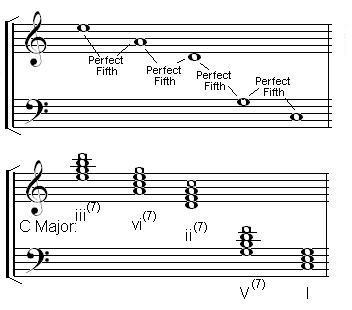Percy Goetschius
Percy Goetschius (10 August 1853 Paterson, New Jersey – 29 October 1943 Manchester, New Hampshire) won international fame in the teaching of the theory of composition.[1]
Career
Goetschius was born in Paterson, New Jersey. He was also encouraged by Ureli Corelli Hill, a conductor and violinist, who was a friend of the Goetschius family.[2] Goetschius was the organist of the Second Presbyterian Church from 1868–1870 and of the First Presbyterian from 1870–1873, and pianist of Mr. Benson's Paterson Choral Society. He went to Stuttgart, Württemberg, in 1873 to study theory in the Royal Conservatory with Immanuel Faisst, and soon advanced to become a professor. In 1885, King Karl Friedrich Alexander of Wurttemberg conferred upon him the title of royal professor. He composed much, and reviewed performances for the press. Syracuse University conferred an Honorary Music Doctorate degree up Goetschius for the academic year 1892–1893.[3] In 1892 he took a position in the New England Conservatory, Boston, and four years later opened a studio in that city. In 1905 he went to the staff of the Institute of Musical Art (Juilliard School) in New York City, headed by Dr. Frank Damrosch.
Goetschius's notable pupils include Henry Cowell, Lillian Fuchs, Howard Hanson, Wallingford Riegger, Bernard Rogers, Julia Klumpke, and Arthur Shepherd. In 1917, he was elected an honorary member of Phi Mu Alpha Sinfonia fraternity, the national fraternity for men in music, by the fraternity's Alpha chapter at the New England Conservatory.
Selected music theory textbooks
Goetschius published several textbooks on theory, including:
- The Material Used in Musical Composition, New York: G. Schirmer
- The Theory and Practice of Tone-Relations, Boston: New England Conservatory (1892); OCLC 62459269, 875583226
- Models of the Principal Musical Forms, Boston: New England Conservatory (1892); OCLC 957765390
- Lessons in Music Form, Boston: Oliver Ditson (1904)
- Exercises in Melody Writing, New York: G. Schirmer
- The Larger Forms of Musical Composition, New York: G. Schirmer
- The Homophonic Forms of Musical Composition, New York: G. Schirmer
- Music Theory for Piano Students, co-authored with Clarence Grant Hamilton, John P. Marshall, Will Earhart, Boston: Oliver Ditson
- (1924); OCLC 5020226
- ?? (1930)
- Exercises in Elementary Counterpoint, G. Schirmer
- 5th ed. (1910); OCLC 756994501
- Counterpoint, New York: G. Schirmer (1930)
- The Structure of Music, Philadelphia: T. Presser (1934)
As of the mid-20th century, use of Goetschius' books, as texts, is rare; albeit, the books contain original theoretical ideas and pedagogical approaches that endure today.
Goetschius' theory of harmonic progression
Perhaps the most important theory put forth by Goetschius is that of natural harmonic progression, which first appeared in The Theory and Practice of Tone-Relations. According to Goetschius' theory, the triad V in a key resolves to the tonic triad I because of the acoustically perfect interval of the fifth between the root of V and that of I:

Goetschius believed that, since the upper tone of the fifth is a harmonic of the lower, a chord rooted on the upper tone demands to be "resolved" by progressing to the chord rooted on the lower tone. Moreover, this theory is extended to other chords in a key, so that the normal tendency of a chord (triad or seventh chord) in a key is to progress to the chord rooted a fifth lower.

The sole weakness of this theory is its failure to account for the importance of the subdominant triad IV, a chord frequently used in musical practice. Although Goetschius acknowledges the importance of the IV harmony elsewhere in his writings, it does not appear to have a place in his theory of harmonic progression.
Family
My family name is (or should be) pronounced get'she-us. The family hails from Switzerland (1714), where the name was Götschi. One of my ancestors, middle of the 18th century, an earnest Latin scholar, affixed the Latin terminal us.
— Percy Goetschius, as he told the Literary Digest[4]
Goetschius died in Manchester, New Hampshire, where he had retired to in 1925.
References
General
- Percy Goetschius, Theorist and Teacher (Ph.D. dissertation), by Mother Catherine Agnes Carroll, RSCJ (1910–1996), Eastman School of Music (1961); OCLC 31051516, 12860645Note: Mother Carroll had been a long-standing music professor at Manhattanville College
- A History of Harmonic Theory in the United States, by David M. Thompson (PhD) (born 1951), Kent State University Press (1980); OCLC 681085691As of 2017, Thompson is Chair of the Music Department at Marian University, Fond du Lac, Wisconsin, where he teaches music theory, history, music administration, and American music
Inline citations
- New Jersey Biographical Dictionary (2008–2009 ed.; Vol. 1 of 2), Caryn Hannan (ed.), State History Publications (2008), pps. 274–276 ; OCLC 245610040
- Thompson, David M.: A History of Harmonic Theory in the United States. Kent, Ohio: The Kent State University Press, 1980. P37.
- Annual Report of the Regents (Vol. 106), University of the State of New York, James B. Lyon, State Printer, pg. 609 (1893); OCLC 460851224, 150088199
- What's the Name, Please?, by Charles Earle Funk, Funk & Wagnalls (1936, 1938), pg. 71; OCLC 759066016, 3142055